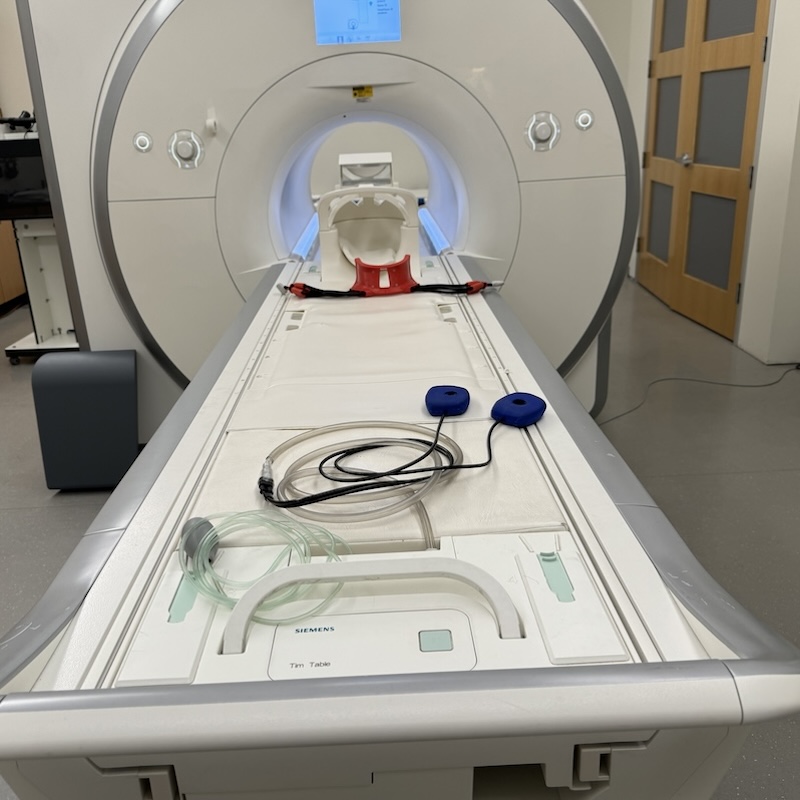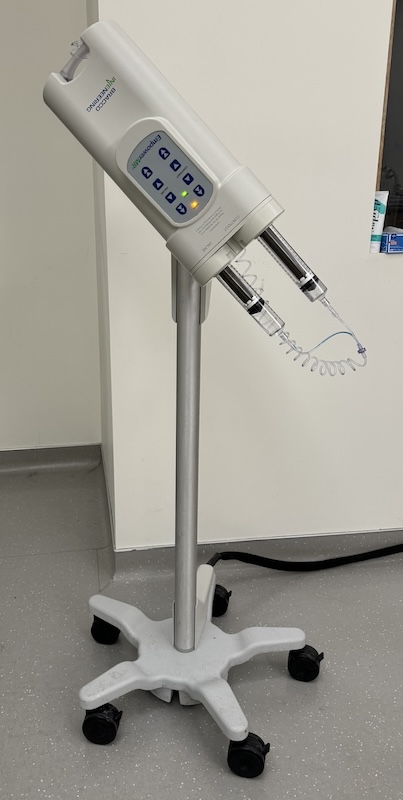





The research participant lies on the scanner table, which is then moved horizontally into the bore for scanning. When completely out of the magnet, the table may also be moved vertically.
Participant comfort is very important to minimizing movement and participants are made more comfortable with a variety of soft supports (e.g., for raising the knees, supporting the neck, or cushioning the head).

In many diseases, symptoms will only occur during stress, therefore a dynamic evaluation is required. The MR ergometer is specifically designed for exercising to induce stress during MRI examinations, in lieu of using drugs.
Model Name: Lode MR Ergometer
Figure: Illustration of how the ergometer is used in the MRI scanner.

This emergency magnet quench button is used in a life-threatening emergency to vent all the helium from the scanner. This dire action dissipates the magnetic field, which will then reach a "safe" level after several minutes.
Only quench the scanner in a life-threatening situation! Quenching the scanner can destroy a million dollar machine.


The injector device allows precise, controlled injection of saline and contrast agents. Most neuroimaging experiments don't require injections, but it can be useful for some types of experiments. The injector device is controlled from within the Console room by a dedicated display at the console.
Model Name: BRACCO EmpowerMR Contrast Injection System (controlled by the BRACCO Injeneering EmpowerMR Contrast Injection System Display at the console).





This MR compatible writing tablet and pen act like a mouse so that pen contacts can be recorded by stimulus presentation software (Eprime, for example). The primary use of the tablet is to register touches, but it is not well-suited for capturing writing or drawing.
Model Name: This tablet was developed by
the Rotman Institute and is described in this article:
Tam, F., Churchill, N. W., Strother, S. C., &
Graham, S. J. (2008). System for computerized writing and drawing
during fMRI. Proc Intl Soc Mag Reson Med.
